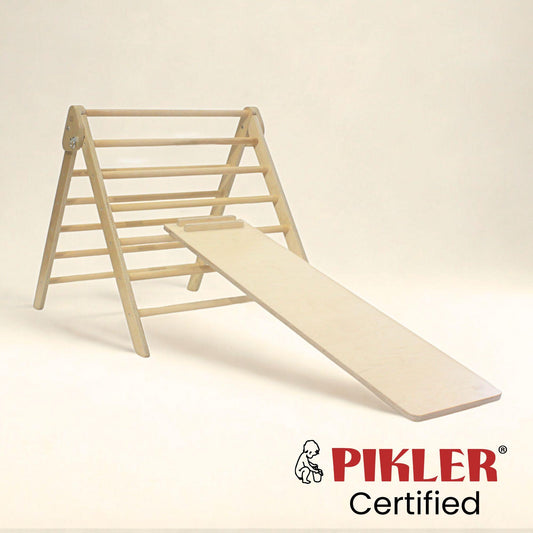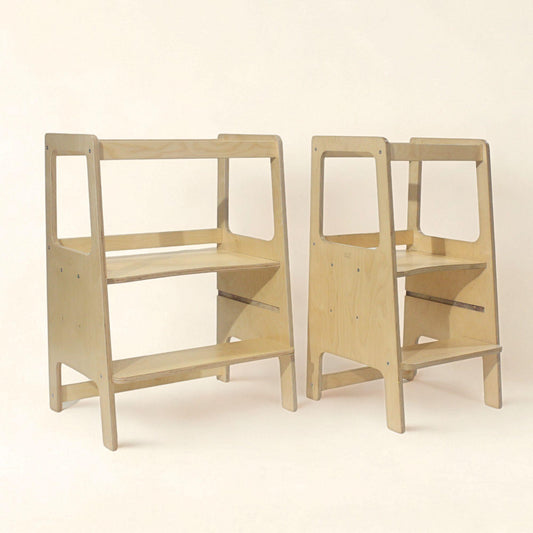
The Relationship Between Gross Motor Development, Open-Ended Play, and Literacy and Brain Development
Share
The early years of a child's life are crucial to their lifelong welfare. The CDC states that early brain development in the first eight years of life can build a foundation for future learning, health, and success.
Studies have shown that progress in different areas of development may be correlated with one another. In particular, there is a surprising connection between a child's gross motor development and literacy and brain development. When it comes to strengthening these areas, open-ended play is an excellent method. Here's what you need to know.
How Gross Motor Development Improves Literacy
Gross motor skills are a child's ability to move large muscles like the arms, legs, and torso. This allows them to engage in essential activities that facilitate interactions with the world, like walking, running, climbing, kicking, and throwing. A study by Florida International University reports that gross motor skills are part of a larger host of factors that influence language development. For instance, a skill like walking can help infants grow their vocabulary by independently exploring the world around them and understanding how to articulate their encounters. In this way, gross motor skills can help propel language development across early brain development.
Depending on their age, you can train motor skills by having kids jump rope, play catch, climb stairs or playground equipment, or crawl in a tunnel. Our Pikler Triangle is perfect for cultivating gross motor skills while ensuring safety. You can verbally support children as they climb, helping them acquire the language for movement of their bodies. Engaging them in activities like these can help expand their vocabulary, especially when you guide them with instructions with actions to follow.
How Literacy Improves Gross Motor Development
Literacy is a critical part of a child's development as it helps them socialize, perform well in school, distinguish right from wrong, and enhance problem-solving. And while motor skills are imperative to the development of literacy, the reverse is also true — improving literacy in a child is critical to developing their gross motor skills. When you provide repetitive instructions, children learn to associate them with the movement you're asking them to do. And because they are guided verbally, children are more confident to exercise their big movements and interact with the world.
One of the best ways to cultivate literacy in children is by reading aloud together. Digital library Scribd finds that reading has unexpected brain benefits like increasing human understanding, fostering creativity, boosting vocabulary, and making sense of increasingly tricky ideas. To unlock these benefits, read aloud with the child as early as possible. Introduce vocabulary by explaining meanings when they ask. Practice reading comprehension by asking them what they see and how these things make them feel. In line with this, Our Tiered Shelves for book displays are a great way to guide children in identifying their preferences. By having all your book covers within view, they can easily point out the book that they want to read out. When you allow them to choose what they prefer, express how they feel, and ask what they're curious about, you expand their understanding when they learn about things beyond language, like gross motor skills.
How Open-Ended Play Supports Gross Motor Skills and Literacy Development

Image credit: https://radchildrensfurniture.com/products/shelves
Open-ended play allows a child to use their imagination to interact with objects around them instead of limiting activities to how they should be done. For example, the child can imagine wooden blocks as anything from cars to animals to buildings. The RAD Grow Stool that we offer allows them to envision themselves in any scenario, from being a student in school to a clerk at a store. Likewise, you can give them scarves and other fabrics that they can use as capes, gowns, or hats.
By encouraging children to explore the infinite ways objects can be played, they can train their bodies to move and function in many different ways. Additionally, open-ended play helps children foster literacy by using their vocabulary to satisfy their make-believe scenarios. This allows them to practice their communication skills.
Our article "Children Need a 'Yes' Space to Call Their Very Own" suggests providing children with a safe space to independently explore their surroundings to harness these benefits. They can maximize their holistic development when you allow them to operate without adult intervention. Fill this space up with anything that you think can nurture creativity. An excellent item for this "yes" space would be our Pikler-inspired Labyrinth which has an ambiguous shape, allowing children to transform it into a rocket, a boat, or a carriage. This, and other items you put in the "yes" space, allow them free reign, so they can freely explore their imagination.
Focusing on holistic development allows children to face the world better as they grow older. By fostering open-ended play, you can help children develop gross motor skills and literacy, equipping them better for the future.
***********************************
Article written by Riley Anne Jamison
Exclusively for RAD Children's Furniture




